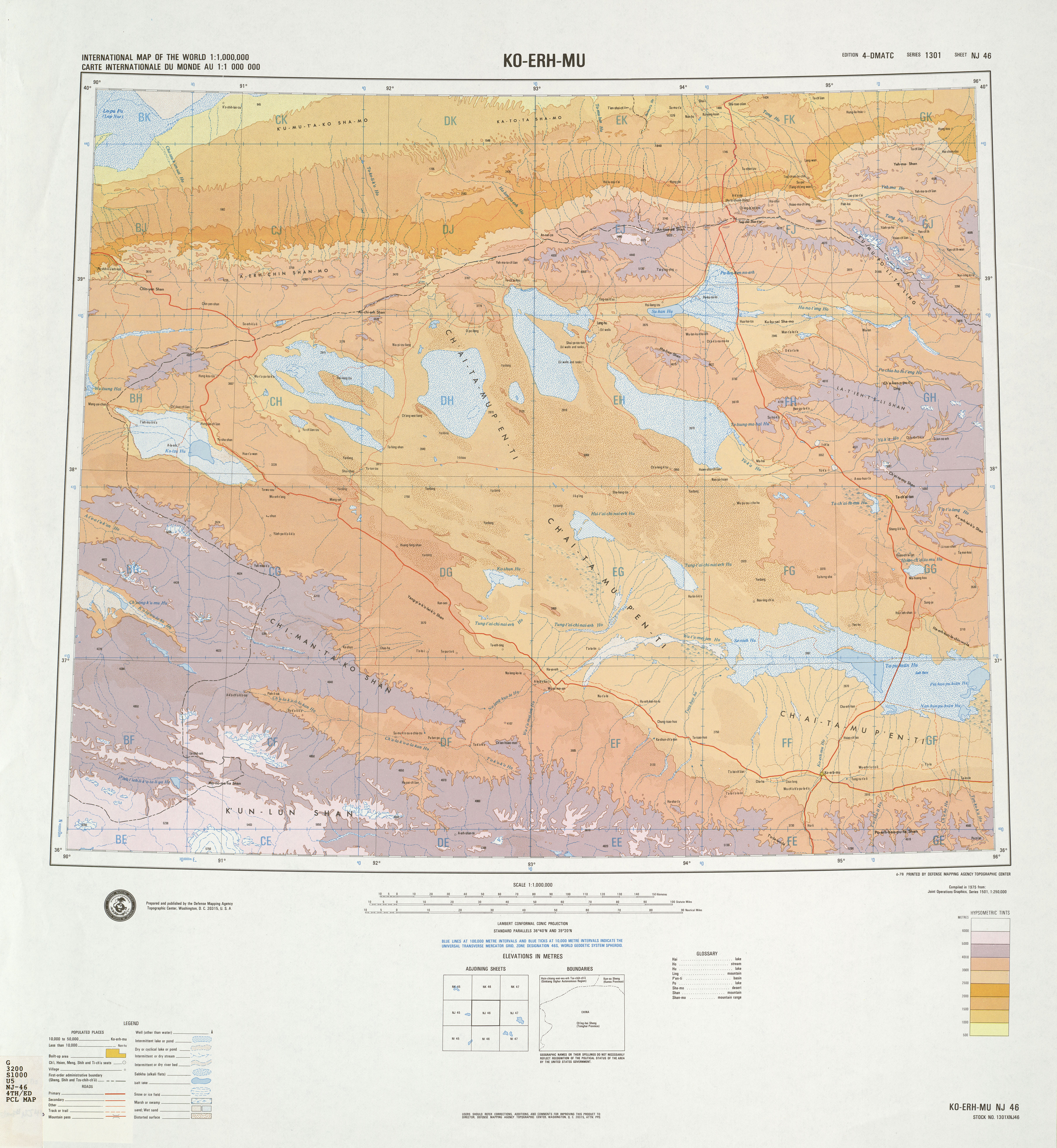Golmud River on:
[Wikipedia]
[Google]
[Amazon]
The Golmud or Ge'ermu River is a river in
 The Golmud flows north from the Kunlun Mountains, past
The Golmud flows north from the Kunlun Mountains, past
Golmud County
Golmud, also known by various other romanizations, is a county-level city in the Haixi Mongol and Tibetan Autonomous Prefecture of Qinghai Province, China. It is now the second-largest city in Qinghai and the third largest in the Tibetan Pl ...
, Haixi Prefecture, Qinghai Province
Qinghai (; alternately romanized as Tsinghai, Ch'inghai), also known as Kokonor, is a landlocked province in the northwest of the People's Republic of China. It is the fourth largest province of China by area and has the third smallest pop ...
, China. It flows north from the Kunlun Mountains to Dabusun and (occasionally) West Dabusun Lakes in the central Qarhan Playa
The Qarhan Playa or also misleadingly described as , is a playa in the Golmud and Dulan counties of Haixi Prefecture, Qinghai, China. Formerly a single unitary lake, it is now an expansive salt flat divided into four greater sections ( Dabu ...
in the southeastern Qaidam Basin. The county seat Golmud
Golmud, also known by various other romanizations, is a county-level city in the Haixi Mongol and Tibetan Autonomous Prefecture of Qinghai Province, China. It is now the second-largest city in Qinghai and the third largest in the Tibetan ...
lies along it.
Names
''Golmud'' is a romanization of a Mongolian word meaning "rivers". ''Ge'ermu'' is the pinyin romanization of the Mandarin pronunciation of the same name's transcription intoChinese characters
Chinese characters () are logograms developed for the writing of Chinese. In addition, they have been adapted to write other East Asian languages, and remain a key component of the Japanese writing system where they are known as ''kanji ...
; it is sometimes misspelled ''Geermu''. ''Ko-erh-mu'' was the same name romanized using the Wade–Giles system. The Wylie romanization of the Tibetan
Tibetan may mean:
* of, from, or related to Tibet
* Tibetan people, an ethnic group
* Tibetan language:
** Classical Tibetan, the classical language used also as a contemporary written standard
** Standard Tibetan, the most widely used spoken diale ...
form of the name is ''Nagormo''.
It was formerly known as the from a town near its headwaters.
Geography
 The Golmud flows north from the Kunlun Mountains, past
The Golmud flows north from the Kunlun Mountains, past Golmud
Golmud, also known by various other romanizations, is a county-level city in the Haixi Mongol and Tibetan Autonomous Prefecture of Qinghai Province, China. It is now the second-largest city in Qinghai and the third largest in the Tibetan ...
, to a wide alluvial fan
An alluvial fan is an accumulation of sediments that fans outwards from a concentrated source of sediments, such as a narrow canyon emerging from an escarpment. They are characteristic of mountainous terrain in arid to semiarid climates, but a ...
along the central part of the south side of the Qarhan Playa
The Qarhan Playa or also misleadingly described as , is a playa in the Golmud and Dulan counties of Haixi Prefecture, Qinghai, China. Formerly a single unitary lake, it is now an expansive salt flat divided into four greater sections ( Dabu ...
. For most of the year, only a small stream reaches Dabusun Lake
Dabusun or alternately known as is a lake beside the town Qarhan, just north of Golmud in the Haixi Prefecture of Qinghai Province in northwestern China. Fed by the main course of the Golmud River, it is the largest present-day lake in the ...
but meltwater from the mountain glaciers sometimes floods into the other channels, spreading from West Dabusun Lake in the west, along the entire southern shore of Dabusun in the middle, and to Tuanjie Lake
Tuanjie Lake is a lake in the southeastern Qarhan Playa north of Golmud in the Haixi Prefecture of Qinghai Province in northwestern China. It is fed from the south by the Shougong River. Like the other lakes of the surrounding Qaidam Basin, ...
in the east.
See also
*List of rivers of China
This incomplete list of rivers that flow through China is organized according to the body of water into which each river empties, beginning with the Sea of Okhotsk in the northeast, moving clockwise on a map and ending with the Arctic Ocean.
Se ...
References
Citations
Bibliography
* . Rivers of China Rivers of Qinghai Haixi Mongol and Tibetan Autonomous Prefecture {{bots, deny=Citation bot